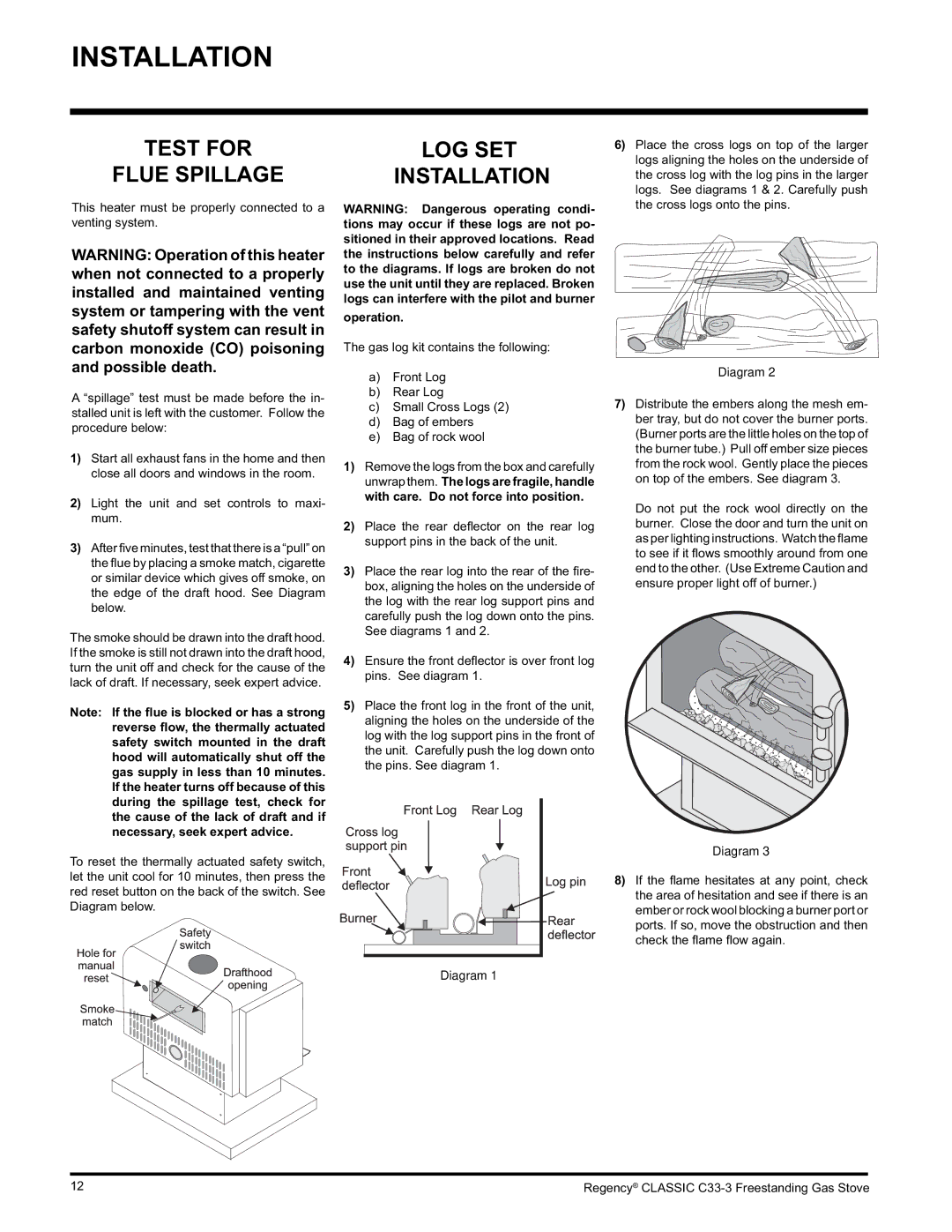C33-NG3, C33-LP3 specifications
The Regency C33-NG3 and C33-LP3 are advanced gas fireplaces that reflect both elegance and functionality, making them ideal choices for those looking to enhance their living spaces. These models stand out in the market due to their exceptional design and innovative technology, catering to both natural gas and propane options.One of the main features of the Regency C33-NG3 and C33-LP3 is their impressive heating capacity. Both models boast an efficiency rating that competently warms your space while maintaining eco-friendly operations. This makes them an attractive option for homeowners seeking a blend of luxury and sustainable heating solutions.
Both fireplace models are designed with a modern aesthetic, featuring a sleek front and expansive viewing area that allows the warm glow of flames to be the centerpiece of any room. With customizable trim options and the ability to add decorative media such as stones or glass, these fireplaces can be tailored to fit various interior designs. The contemporary linear design not only offers visual appeal but also maximizes the heat output, ensuring a cozy environment.
In terms of technology, the Regency C33-NG3 and C33-LP3 come equipped with an advanced electronic ignition system. This feature allows for easy lighting of the fireplace with the push of a button, eliminating the hassle associated with traditional ignition methods. Additionally, these models include a thermostatic control option, enabling users to maintain their desired temperature effortlessly.
The patented heat exchanger technology enhances the overall efficiency of both models, ensuring that the heat produced is directed into the room rather than being lost through the venting system. This innovative design contributes to a more efficient heating experience, making these fireplaces a cost-effective choice for consumers.
Safety is also a priority with the Regency C33-NG3 and C33-LP3. Both models incorporate safety barriers and advanced flame sensing technology, ensuring peace of mind during operation. The sleek glass front not only adds to the aesthetic but also keeps flames safely contained, making them suitable for families with children or pets.
In conclusion, the Regency C33-NG3 and C33-LP3 combine modern elegance with advanced heating technology. Their efficient heating capabilities, customizable designs, and user-friendly features make them standout choices for anyone looking to elevate their home’s ambiance while ensuring warmth and comfort.

